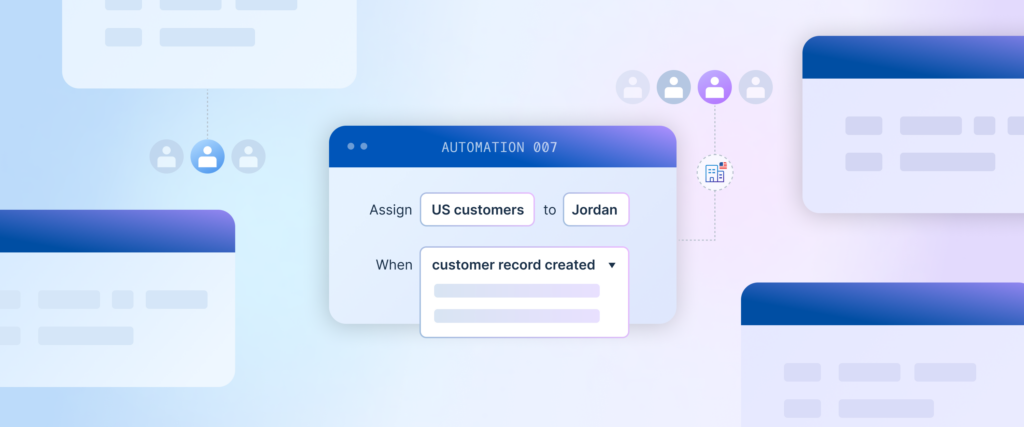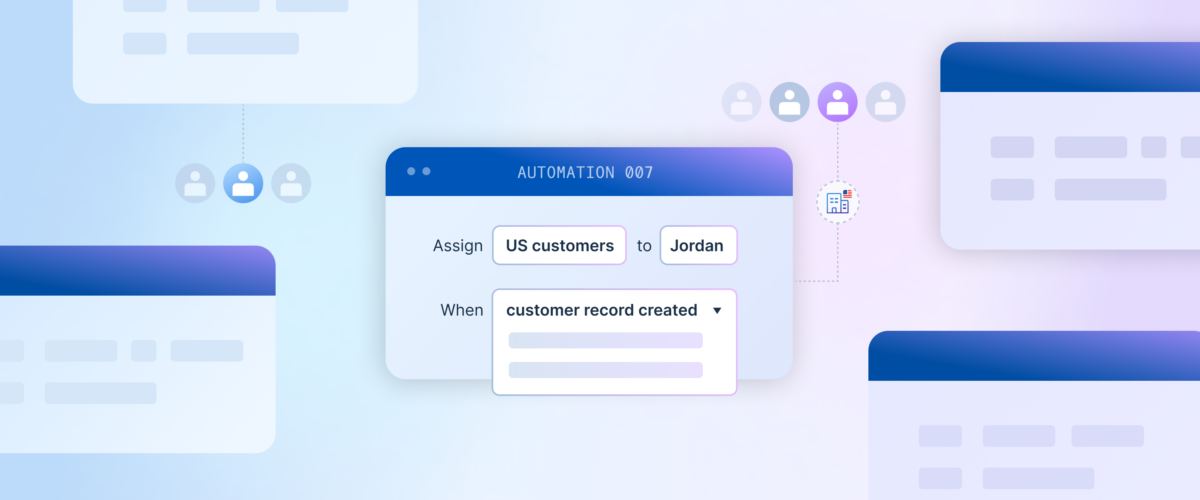Automate repetitive tasks in ChartMogul


Set up automations in your account to make repetitive tasks easier, cut down on mistakes and help your team work faster.
Automations are helpful workflows that kick into gear based on specific conditions you set. They’re perfect for saving time by handling repetitive tasks and speeding up everyday processes. Plus, they cut down on mistakes made by human error and keep your ChartMogul account constantly up-to-date. Automations can also cut down on the need for developers to build using the ChartMogul API, e.g. you can now automatically merge customers with a simple automation, something that previously would have required engineering time.
To start with, you can trigger an automation whenever a customer record is created, an existing one is updated, or when a duplicate record is detected. You can add specific conditions based on any customer field, then decide what action you want ChartMogul to take.
The possibilities with automations are vast and can be customized to fit your precise business needs. To get you started, we’ve compiled a handful of helpful automation examples which you can easily set up in your ChartMogul account today.
All new ChartMogul accounts come with one active automation: merging duplicate customer records. Existing customers will find this automation disabled by default, but can locate it in your account settings and activate it as desired. For more details, visit our help center.
What can you do with automations in ChartMogul?
Consolidate the full customer journey by merging duplicate customer records
ChartMogul works by combining the billing and customer data of your subscribers from the range of sources you use in your tech stack.
For example, combining subscription billing data from Stripe and Chargebee, and customer data from Intercom and your own database. When combining this data, we want to make sure there’s only one consolidated record for each customer, reducing confusion and enabling error-free analysis of the complete customer journey.
Merging these duplicate accounts by hand is time consuming and prone to human error. Instead, use the merge duplicate customer records automation to streamline this task.
This automation will immediately detect when a new customer created matches an existing customer in your ChartMogul account. Then, it merges the two records leaving you with just one record.
To enable this, see our help article or go to your automations. You’ll see this automation set up in your account by default, ready for you to switch on.
Instantly identify and tag priority customers and ICP-fit leads
As your customer base grows, use tags to categorize certain records and leads. These tags can then be used by your whole team in Subscription Analytics, CRM or in any other tools which rely on ChartMogul data.
Create your own tags that fit your business, like:
- Label your highest value customers as Priority.
- Mark less valuable customers as Self-Service.
- Tag leads that fit your Ideal Customer Profile as ICP.
- Identify leads from big companies as Enterprise.
Instead of manually tagging customers and leads as they are added to your account, use automations to tag each account based on your custom set of predefined conditions. This will not only save you time, but also ensure you have full coverage across all new customers being added to your ChartMogul account.
Tags can be used operationally by marketing to run dedicated campaigns, by customer success to know which onboarding plays to run, and by sales to understand priority. At the same time, tags can be used strategically to get insight into the make-up of your new leads and customer base, informing decisions to adjust marketing strategy, prioritize new features and improve messaging.
To enable automated tagging, see our help article or go to your automations.
Save time by automatically routing leads directly to the right salesperson
If you’re using ChartMogul CRM, you can replace manual lead routing with automations. This ensures that incoming leads are promptly assigned to the right salesperson so they can quickly respond and convert those leads into subscribers.
Automated lead routing maximizes the productivity of your sales team by ensuring every opportunity is pursued and prevents leads from falling through the cracks. It also improves transparency and fairness through being a consistent method of distributing leads amongst the sales team.
Automating lead routing by geography is a common approach, where each new lead is assigned based on their location. Divide regions, countries or states between your sales team, and set up an automation that routes new leads to the responsible salesperson based on their defined territory. Lead routing by geography is ideal when you’re selling across a range of timezones, languages and cultures.
Automating lead routing by size, industry or product works well when you have sales reps who have expertise specific to a certain type of customer. This approach lets the salesperson tailor their outreach and process to best suit the lead. Common examples of this approach include dividing leads by:
- SMB, Mid-market and Enterprise (based on total headcount) when each have a slightly different sales process and specific objections.
- Industry or sub industry when each has different use cases or pricing models.
- Product when you sell multiple products and run a different sales process for each.
- To enable automated lead routing, see our help article or go to your automation.
We’re immensely excited to launch automations in ChartMogul and have big plans to continue developing the functionality to make your day-to-day even easier. To learn more or share feedback, see our help center or get in touch.

